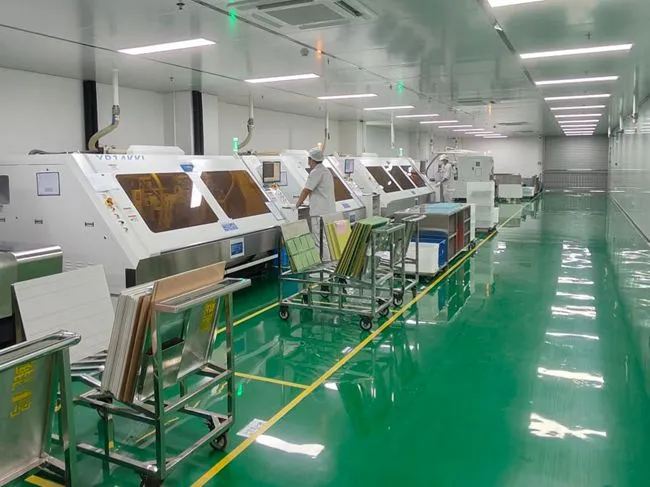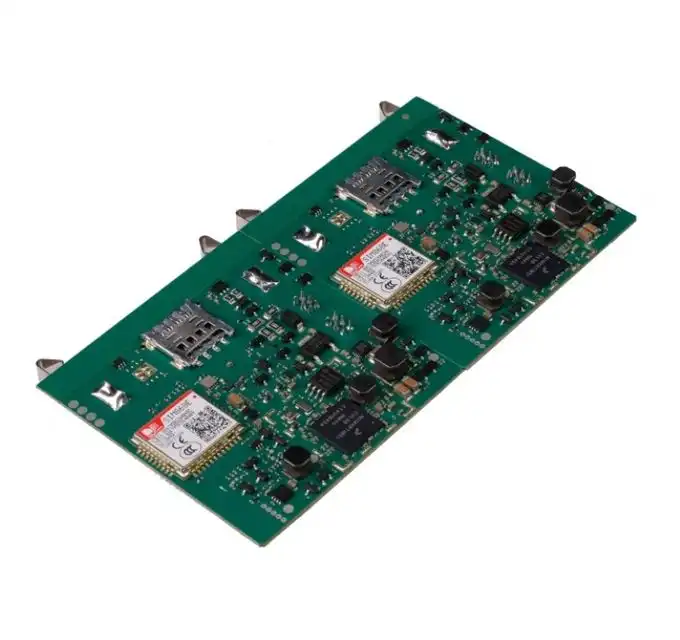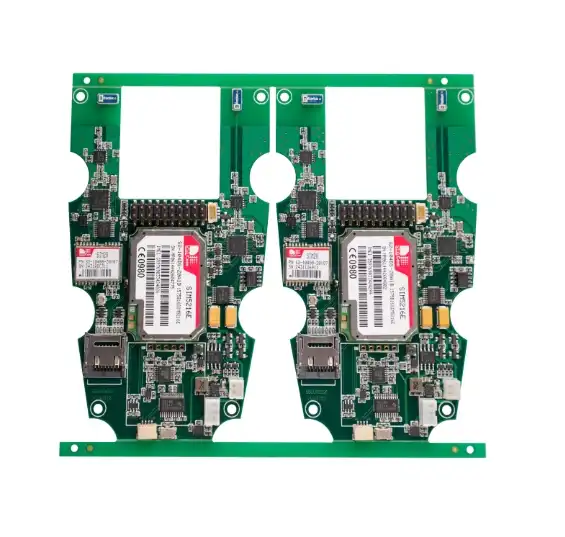The Evolution of PCBA Technology in Electric Vehicles
The automotive industry has witnessed a significant transformation in recent years, particularly in the realm of electric vehicles. As EVs gain popularity, manufacturers are constantly seeking innovative solutions to enhance performance, efficiency, and design. One of the key areas of advancement is in the field of Printed Circuit Board Assembly (PCBA) technology.
Traditional PCBAs have long been the backbone of electronic systems in vehicles. However, the unique challenges presented by electric vehicles have pushed the boundaries of what's possible with conventional rigid boards. The need for more compact designs, improved thermal management, and enhanced durability has led to the development and adoption of Flexible PCBA technology.
Flexible PCBAs offer numerous advantages over their rigid counterparts. These assemblies can be bent, folded, or shaped to fit into tight spaces within the vehicle's structure. This flexibility allows for more efficient use of space, which is crucial in EVs where every inch counts towards battery capacity and overall vehicle performance.
Advantages of Flexible PCBA in EV Design
The integration of Flexible PCBA in electric vehicle design brings several key benefits:
- Space Optimization: Flexible PCBAs can conform to the vehicle's contours, allowing for more efficient use of limited space.
- Weight Reduction: These lightweight assemblies contribute to overall vehicle weight reduction, improving energy efficiency.
- Improved Reliability: Flexible PCBAs are more resistant to vibration and shock, enhancing durability in the harsh automotive environment.
- Enhanced Thermal Management: The ability to spread components over a larger area aids in heat dissipation, crucial for EV battery and power systems.
- Design Freedom: Engineers have greater flexibility in component placement and overall system design.
The adoption of Flexible PCBA technology is not without its challenges. The assembly process requires specialized equipment and expertise. However, as the technology matures and becomes more widespread, these hurdles are gradually being overcome. Many PCBA manufacturers are investing in advanced assembly lines and developing new techniques to produce high-quality flexible assemblies at scale.
Impact of Flexible PCBA on EV Internal Structure Design
The integration of Flexible PCBA technology is having a profound impact on the internal structure design of electric vehicles. This innovative approach to electronic assembly is enabling automotive engineers to reimagine the layout and functionality of various systems within EVs.
One of the most significant impacts is in the area of powertrain design. Flexible PCBAs allow for more compact and efficient packaging of power electronics, including inverters and DC-DC converters. This not only saves space but also improves cooling efficiency, which is crucial for maintaining optimal performance of these high-power components.
In the realm of battery management systems (BMS), Flexible PCBAs are proving to be a game-changer. These systems can be designed to wrap around battery cells or packs, providing more accurate temperature monitoring and control. The flexibility also allows for better integration of sensors throughout the battery system, enhancing safety and performance monitoring capabilities.
Innovative Applications of Flexible PCBA in EVs
Beyond the powertrain and battery systems, Flexible PCBA technology is finding innovative applications throughout the vehicle:
- Interior Electronics: Flexible assemblies can be integrated into curved surfaces, allowing for sleeker dashboard designs and more ergonomic control interfaces.
- Lighting Systems: LED lighting strips with integrated flexible circuits enable creative and efficient lighting solutions both inside and outside the vehicle.
- Sensor Integration: Flexible PCBAs facilitate the placement of sensors in previously inaccessible areas, enhancing the vehicle's sensing capabilities for advanced driver assistance systems (ADAS).
- Wiring Harness Reduction: By incorporating flexible circuits, manufacturers can reduce the complexity and weight of traditional wiring harnesses.
The adoption of Flexible PCBA technology is also driving changes in the manufacturing and assembly processes for EVs. Traditional assembly lines are being adapted to handle these new components, with specialized equipment for handling, testing, and integrating flexible circuits into vehicle structures.
Future Prospects and Challenges in Flexible PCBA for EVs
As the automotive industry continues its rapid transition towards electrification, the role of Flexible PCBA technology is set to become even more prominent. The future prospects for this technology in EV design are promising, with several key trends emerging:
- Miniaturization and Integration: As Flexible PCBA technology advances, we can expect to see even greater levels of miniaturization and integration. This could lead to entire vehicle subsystems being implemented on a single flexible assembly, further reducing weight and complexity.
- 3D Flexible PCBAs: The next frontier in flexible electronics is the development of truly three-dimensional flexible assemblies. These could conform to complex shapes within the vehicle, opening up new possibilities for space utilization and design.
- Smart Surfaces: The integration of flexible circuits into vehicle surfaces could lead to the development of "smart skins" that incorporate sensors, displays, and even energy harvesting capabilities.
Overcoming Challenges in Flexible PCBA Implementation
While the potential of Flexible PCBA in EV design is immense, there are several challenges that need to be addressed:
- Durability and Longevity: Ensuring the long-term reliability of flexible assemblies in the harsh automotive environment remains a key concern.
- Thermal Management: As power densities increase, managing heat dissipation in flexible circuits becomes more challenging.
- Manufacturing Scalability: Developing cost-effective, high-volume production processes for complex flexible assemblies is crucial for widespread adoption.
- Design Tools and Standards: The industry needs to develop more sophisticated design tools and standardized practices for flexible PCBA implementation in EVs.
Overcoming these challenges will require collaborative efforts between automotive manufacturers, PCBA suppliers, and technology innovators. Investments in research and development, as well as in advanced manufacturing capabilities, will be key to unlocking the full potential of Flexible PCBA technology in electric vehicle design.

Conclusion
The transition from traditional to Flexible PCBA represents a significant leap forward in electric vehicle internal structure design. This innovative technology is enabling automotive engineers to create more efficient, compact, and sophisticated electronic systems, driving the evolution of EV design. As the industry continues to embrace and refine Flexible PCBA solutions, we can expect to see even more groundbreaking developments in vehicle electrification.
For EV manufacturers and suppliers looking to stay at the forefront of this technological revolution, partnering with experienced PCBA manufacturers is crucial. These specialized product suppliers and manufacturers can provide the expertise and advanced manufacturing capabilities needed to implement cutting-edge Flexible PCBA solutions effectively. By leveraging the latest in flexible circuit technology, automotive companies can enhance their competitive edge and drive innovation in the rapidly evolving electric vehicle market.
FAQ
What are the main advantages of using Flexible PCBA in electric vehicles?
Flexible PCBA offers space optimization, weight reduction, improved reliability, enhanced thermal management, and greater design freedom in EV manufacturing.
How does Flexible PCBA technology impact EV battery systems?
It allows for more efficient packaging of battery management systems, improved temperature monitoring, and better integration of sensors throughout the battery pack.
What challenges are associated with implementing Flexible PCBA in EVs?
Key challenges include ensuring long-term durability, managing thermal issues, scaling up manufacturing processes, and developing standardized design practices.
Advanced Engineering Solutions for EV PCBA Manufacturing | Ring PCB
At Ring PCB, we specialize in advanced Flexible PCBA solutions for the automotive industry. Our state-of-the-art facility offers high-density stack-up capabilities, smart manufacturing processes, and rigorous quality control measures. We provide comprehensive one-stop services, from PCB fabrication to component sourcing and full assembly support. Our expert engineering team optimizes designs for manufacturability and cost-efficiency. For cutting-edge Flexible PCBA solutions tailored to your EV projects, contact our experienced team at [email protected].
References
1. Johnson, A. (2023). "Advancements in Flexible PCBA Technology for Electric Vehicle Applications." Journal of Automotive Electronics, 15(3), 245-260.
2. Smith, R., & Brown, T. (2022). "Impact of Flexible Printed Circuit Boards on EV Internal Structure Design." Electric Vehicle Technology Review, 8(2), 112-128.
3. Lee, S., et al. (2023). "Thermal Management Challenges in Flexible PCBA for High-Power EV Systems." International Journal of Automotive Engineering, 14(4), 301-315.
4. Garcia, M., & Wilson, K. (2022). "Manufacturing Processes for Large-Scale Production of Flexible PCBAs in Automotive Applications." Journal of Manufacturing Technology, 11(1), 78-92.
5. Thompson, E. (2023). "Future Trends in Flexible Electronics for Next-Generation Electric Vehicles." Automotive Innovation Quarterly, 7(3), 189-204.






